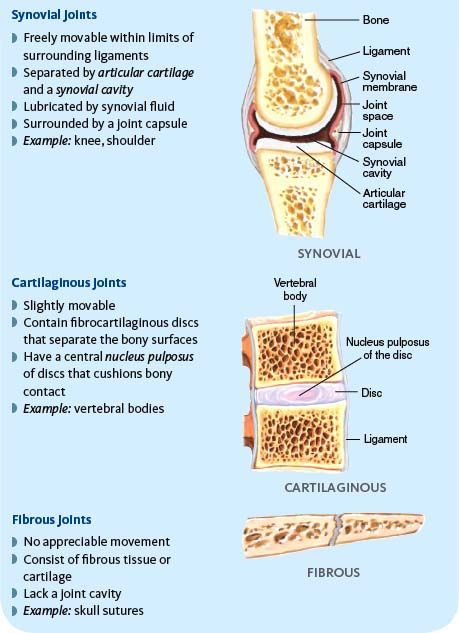The Musculoskeletal System
Fundamentals for Assessing Joints
Assessing joints requires knowledge of their structure and function. Learn the surface landmarks and underlying anatomy of each major joint. Be familiar with the following terms:
• Articular structures include the joint capsule and articular cartilage, synovium and synovial fluid, intra-articular ligaments, and juxta-articular bone.
• Extra-articular structures include periarticular ligaments, tendons, bursae, muscle, fascia, bone, nerve, and overlying skin.
• Ligaments are the ropelike bundles of collagen fibrils that connect bone to bone.
• Tendons are collagen fibers that connect muscle to bone.
• Bursae are pouches of synovial fluid that cushion the movement of tendons and muscles over bone or other joint structures.
Review the three primary types of joint articulation—synovial, cartilaginous, and fibrous—and the varying degrees of movement each type allows.
Joints

Stay updated, free articles. Join our Telegram channel

Full access? Get Clinical Tree


